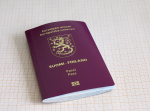
Nestled along the Danish Riviera, a picturesque stretch of coastline just north of Copenhagen, the fishing town of Gilleleje seems like an idyllic haven. Thatched cottages with apple trees heavy
with fruit, blooming pink roses in the dunes, and a lively quay serving fish and chips make it a serene coastal destination. However, beneath this serene exterior lies a profound history of courage and resistance, as Gilleleje played a pivotal role in the escape of Danish Jews during World War Two.
Eighty years ago, in October 1943, the calm waters separating Denmark from neutral Sweden became a lifeline for Danish Jews seeking refuge. Failure to cross to Sweden meant facing deportation and the grim fate of European concentration camps. Yet, thanks to the remarkable bravery of the Danish people, particularly the fishermen and residents of Gilleleje, 7,056 Danish Jews, out of a total population of 7,800, were clandestinely transported to safety in Sweden under the cover of darkness. This extraordinary collective effort stands as one of the most significant acts of resistance during World War Two.
In commemoration of the 80th anniversary of this event, Gilleleje is unveiling a new monument, while a new exhibition titled "Courage to Act: Rescue in Denmark" at the Museum of Jewish Heritage in New York ensures that this remarkable story reaches a wider audience.
This remarkable act of resistance unfolded during the German occupation of Denmark, which had persisted for three and a half years. In the summer of 1943, Germany's fortunes in the war were waning, and the Danish Resistance was growing bolder, with strikes and sabotage activities occurring across the country. In response, Hitler decided to teach the Danes a lesson, ordering the roundup of Danish Jews in September, scheduled for early October.
In Gilleleje, a small town with a population of about 1,700 residents, the community was closely-knit, and everyone knew one another. German soldiers were stationed at a nearby hotel, visible on the town's streets and around the harbor, keeping the locals on edge for unexpected visits by the Gestapo, based in Helsingør down the coast. Despite the risks they faced, the people of Gilleleje rallied together to provide assistance to the fleeing Jews, guiding them from train stations, offering shelter, and ensuring they reached boats under the cover of darkness for the perilous two-hour journey across stormy seas to the Swedish coast.
The Danes' willingness to help those in danger stemmed from a profound understanding: these Jews were not only Jews but also fellow Danes. The responsibility to assist others in peril was deeply ingrained in Gilleleje's religious fishing community, marked by resilience and the innate knowledge of the power of unity and mutual aid.
Søren Frandsen, the author of "Kurs Mod Friheden" (The Path To Freedom), aptly pointed out, "There was something that Hitler had completely misunderstood, and that was: while they were Jews, they were also Danish people. Of course, they would help each other in a crisis."
The fishermen of Gilleleje, guided by a local draper, promptly organized their efforts, locating safe houses, providing food and blankets to those in hiding, and collecting funds to assist those who couldn't afford the journey. Tove Udsholt, who was just three years old at the time, arrived in Gilleleje with her mother, both of them carrying only a small bag of clothes and her teddy bear. Her mother had used her last money to buy a train ticket to Gilleleje, ensuring it was a round-trip ticket to avoid suspicion.
Udsholt, now 83 years old, shared her experiences while showing visitors around Gilleleje Church. She recounted that her mother had hoped for help, saying, "That's how it was." Udsholt was among the few remaining individuals who were alive during this remarkable escape and now conducts talks and tours to share her experiences. She and her mother, along with several others, found refuge in a hay loft on Østergade, just a couple of streets away from the church.
While hiding, they knew that the Gestapo had been alerted to another group of around 80 to 90 Jews hiding in the church attic. This group was swiftly arrested and deported to Theresienstadt camp in Czechoslovakia. Standing in the attic today, with its bare floors and small windows offering a view of the harbor, it is easy to imagine the fear and panic that the captured group must have experienced.
Upon learning of the church group's arrest, Udsholt's group was instructed to leave immediately. Her mother had only a moment to make a life-altering decision. Udsholt remembered the risk, saying, "It was dangerous. A fisherman, Svend, came with food and blankets and saw me, and asked my mum if I could go home with him. She said yes, but that he had to bring me back."
During the rest of the war, Udsholt, along with 135 other Jewish children, was concealed in Denmark, protected from German soldiers by the local community, despite the considerable risks they faced. Udsholt often looks out over the water towards Sweden's lights, where her mother was, but reconciliation was difficult after the war. She ended up staying with her foster family in the small beach town, noting, "Gilleleje looked after me."
Throughout October 1943, similar acts of courage unfolded along the coastline. In Nivå, around 600 Danish Jews found refuge in a brickwork factory's large kiln before making their way through the open marshlands under the cover of night to waiting boats. Photo by Guillaume Baviere from Copenhagen, Denmark, Wikimedia commons.



































